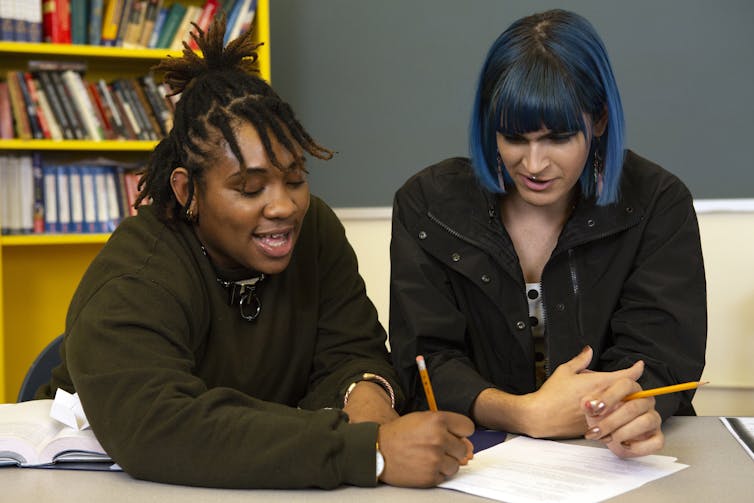is a full professor in the Faculty of Health at .
There are more than . But it doesnŌĆÖt take into account the number of youth living in government care facilities such a group homes or other forms of residential care.
Many youth in care , , sexism and the legacies of colonialism: Indigenous people are over-represented with .
Read more:
Finances are not the . to help create positive health and social outcomes for former youth in care.
Providing against many of the negative life issues youth in care typically experience can mean the difference between living in poverty and experiencing homelessness or having the chance to contribute to society through employment and other forms of social engagement.
The right to education

A 2019 report about from Maytree, an organization dedicated to ending poverty in Ontario, offers recommendations for the provincial government. These include the naming of education as a human right and as an organizing principle within the Ministry of Education. The report also calls for all levels of government to work together to ensure the voices of youth in and from care are heard in relation to their unique challenges and experiences in the education system.
The Assembly of First Nations (AFN) notes that Indigenous people have , but both the AFN and other note federal funding has not .
In 2013, the Ontario-based Youth Leaving Care Working Group called for ChildrenŌĆÖs Aid Societies, the province and post-secondary institutions .
Both the right to education and education as a human right are well accepted in a number of international covenants, including the Universal Declaration of Human Rights, and yet .
Lower educational achievement
Youth who have been in care, on average, and more involvement in criminal justice systems. Many experience worse health and social outcomes overall throughout their lives than youth not in care. Those to find a place to live, a job and a sense of belonging.
These issues have a number of significant, lifelong economic, health and social implications for the individual and for society as a whole. Former youth in care are less than their non-fostered peers. This has direct implications for underemployment and unemployment rates.
As noted in the United Nations Sustainable Development Goal No. 4, education must be ). The United Nations Educational, Scientific and Cultural Organization (UNESCO) also notes under Sustainable Development Goal No. 5 (Achieve Gender Equality) that in an effort to achieve gender equality, women and girls need access to education at all levels.
Reducing financial barriers
The aim behind the development of tuition waiver programs for former youth in care is to help to increase social mobility by reducing financial barriers to post-secondary education.
While several tuition waiver programs have , the actual number of post-secondary institutions offering this concrete solution across the country remains quite low: Child Welfare Political Action Committee Canada, a charity that advocates for the futures of those who have experience with the child welfare system, identifies . There is variability in terms of eligibility criteria among these existing programs across Canada. Still, these programs are an important mechanism to among populations who have been historically under-represented in post-secondary education.
One important dimension of tuition waiver programs is supporting former youth in care both financially and socially to complete post-secondary education without an age cap. The social aspects of these programs can , counselling services, allied health care providers, peer mentors and poverty reduction initiatives.
Social support is an important consideration in that many former youth in care may not be ready for post-secondary education once they age out of care. This may result in older cohorts of former youth in care looking at post-secondary education options later in life than those who donŌĆÖt have experience in the care system.

ŌĆśWraparoundŌĆÖ supports put students at centre
If we truly want to see former youth in care thrive and not simply survive, we need to do more to increase access to post-secondary education. Collectively, we can reduce financial barriers as well as social and other barriers by offering ŌĆ£wrap-aroundŌĆØ supports ŌĆö those , such as assistance in locating housing, navigating the course selection process and ensuring required registration paperwork is completed.
While tuition waivers help address financial barriers to former youth in care, institutions must also address structural issues (such as racism, homophobia and gender-based discrimination and sexism). Efforts to offer safer, more welcoming and affirming spaces for learning can be bolstered through supports specific to particular student populations, such .
Greater leadership needed
In addition, we need to see greater leadership from both within the post-secondary education sector across Canada to ensure we arenŌĆÖt continuing the cycle of poor health, social and economic outcomes among vulnerable segments of the population.
Canada clearly needs to place a greater emphasis on access to and as a human right. The decisions we make on this issue today will have generational effects that we will all have to reconcile in the future.![]()
This article is republished from under a Creative Commons license. Read the .

